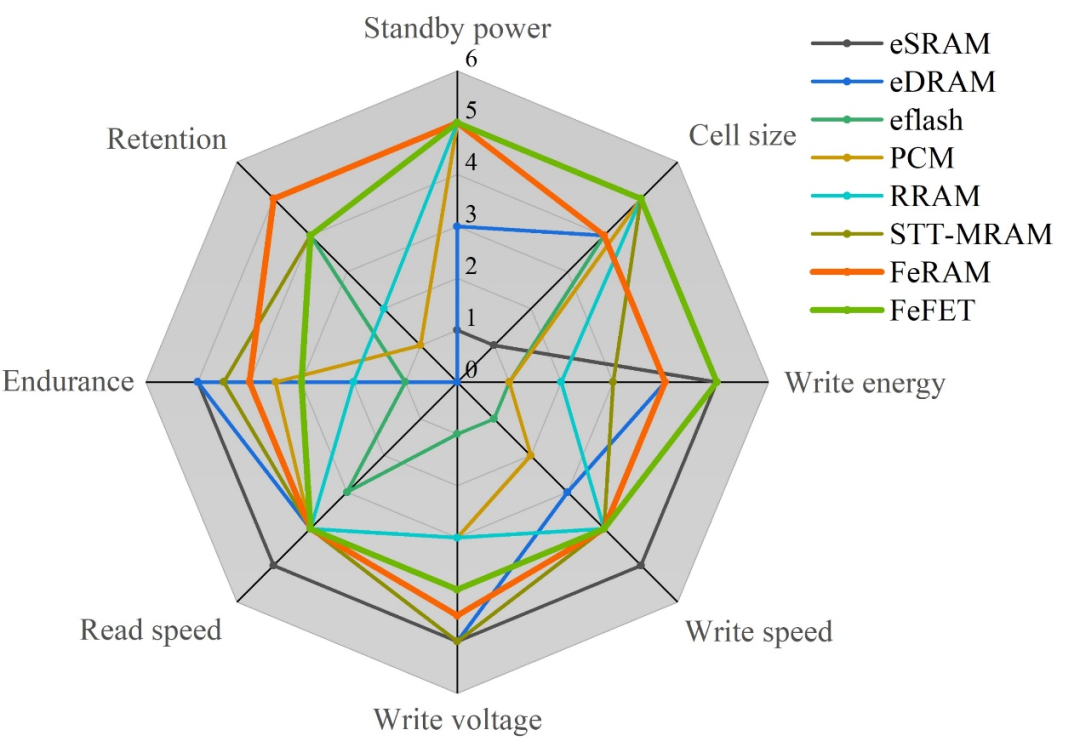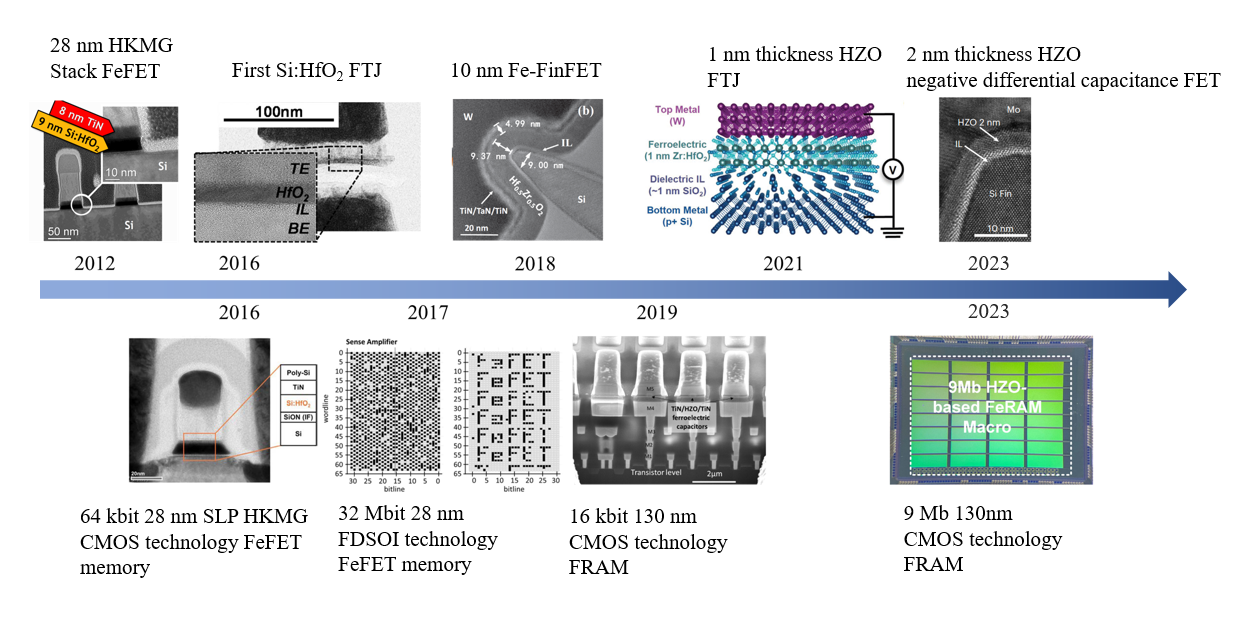Published by Ren Tian-Ling’s team on Chip, the HfO₂-based ferroelectric memory tech is a promising choice in the non-volatile memory field for its high performance. Examples such as FTJs could replace the vonneumann architecture.
This review focuses on the development of ferroelectric HfO₂, mainly summarizes and introduces the preparation methods of ferroelectric HfO₂ materials, ferroelectric memory applications(random access memory (FeRAM), ferroelectric transistor (FeFET) and ferroelectric tunneling junction (FTJ)), the key factors limiting its industrialization, and the corresponding optimization mechanism, and offers insights into future research directions and prospects.
With the development of data-centric applications such as artificial intelligence (AI), machine learning and the internet of things (IoT), the data that computers need to process has exploded, and the delay problem caused by the mismatch between CPU and memory speed has become increasingly prominent, limiting the performance of computers. A promising approach is to use the inherent physical effects and material properties of memory cells to store data, achieving characteristics of non-volatility, fast speed and low power to fill the 「memory wall」. Representative non-volatile memories mainly include ferroelectric memory (FeRAM, FeFET and FTJ, magnetoresistive random access memory (MRAM), resistive random access memory (RRAM) and phase change random access memory (PCRAM)). Among them, ferroelectric memory stands out to be a promising nonvolatile storage technology with low power consumption, high speed, high endurance, and anti-irradiation capability², as shown in Fig. 1.

Fig. 1 | Comparison of performance indexes of emerging mainstream memory technologies.
The FeRAM and FeFET are both based on ferroelectric HfO₂. The higher the score, the better the performance will be.
Ferroelectric memory technology was first introduced in 1952³. However, several inherent weaknesses of traditional ferroelectric perovskite materials, such as relatively large thickness, toxicity to the complementary metal-oxide-semiconductors (CMOS) process, high annealing temperature, and the requirement for monocrystalline films, have greatly hindered the further development of ferroelectric memory.
Since ferroelectricity in Si-doped HfO₂ with a fluorite crystal structure was first reported in 2011, widespread researches have been concentrated on ferroelectric HfO₂⁴. In comparison to traditional perovskite ferroelectric materials such as Pb(Zr,Ti)O₃ (PZT), SrBi₂Ta₂O₉ (SBT), and BaTiO₃ (BTO), HfO₂-based ferroelectric materials have exhibited a series of superior physical properties such as ultrathin thickness even down to 1 nm, low annealing temperature, high coercive electric field and perfect compatibility with modern CMOS processes, making them ideal ferroelectrics for high-performance memory devices⁵. Numerous review papers have been published to summarize the progress of ferroelectric HfO₂. However, relevant reviews on the progress, challenges, and optimal proposals for the application of ferroelectric HfO₂ still remain scarce. This review focuses on the development of ferroelectric HfO₂ applications. Firstly, we introduce the preparation of ferroelectric HfO₂ materials, including the investigations on the physical mechanism of ferroelectric origin. Subsequently, the current progress in ferroelectricity is presented, specifically in the areas of FeRAM, FeFETs, and FTJs, as shown in Fig. 2. Afterwards, the key factors that restrict the further commercial application of ferroelectric HfO₂ and the corresponding optimization schemes are then summarized. Finally, the prospects of ferroelectric HfO₂-based devices are presented.

Fig. 2 | Basic properties and applications of ferroelectric HfO₂. a, Schematic view of lattice structure and corresponding P-E loops of monoclinic and orthorhombic HfO₂, respectively. b, Schematic view of FeRAM 1T-1C cell, SEM cross-section of TiN/HZO (10 nm)/TiN MFM capacitors integrated between M4 and M5 layer of 130 nm node and SEM cross-section of the 3D vertical ferroelectric capacitors array. c, Schematic view of FeFET, SEM cross-section of the integrated FeFET, and the ID–VG curve of FeFET. d, Schematic view of two current states of FTJ realized by two polarization directions of ferroelectric film and the schematic view of the energy band diagrams under different polarization states of FTJ.
In conclusion, HfO₂-based ferroelectric memories have achieved significant progress over the past decade, as depicted in Fig. 3. Nevertheless, much work remains to be conducted to elucidate the physical mechanisms and improve the integrated performance, which will be the focus for the future research. This paper provides a comprehensive review of recent advances in hafnium-based ferroelectric preparation methods, various ferroelectric devices and material parameter optimization, beneficial for a total understanding of ferroelectric HfO₂.

Fig. 3 | Representative advances in HfO₂-based ferroelectric memories. The upper part of the timeline shows the progress of a single device, and the lower part presents the progress of integrated arrays.

 The Latest Developments
The Latest Developments